An academic and sociological literature review that demonstrates the predictive interplay of personality and politics.
Abstract
Using a synthesis of academic research at the nexus of personality and politics, trends in social media, and sociological profiling, the following 5 key take-aways support the correlative hypothesis that an individual’s personality significantly contributes to contemporary political allegiance and engagement.
- The Big Five traits are significant predictors of political engagement, orientation, and media consumption (Gerber, 2011).
- Social media has amplified associative personality attraction, meaning that voters are now conditioned to support candidates who embody shared personality traits.
- Personality reinforced by value echo-chambers has hardened particular personality traits (specifically, agreeableness), leading to increased polarization of the electorate.
- Political identity has become increasingly intertwined with personal identity, leading to vicarious personalization of political issues.
- Distilled from this synthesis, there are 6 key traits at the nexus of politics and personality: engagement, idealism, change appetite, decision-reasoning, agreeableness, and value assertiveness.
Hence, this literature review demonstrates how previously correlative trends in personality-driven political association has evolved to be more causative in nature. In other words, the emergence of personality-driven political association, specifically in the US, has evolved with the rise of social media and social engineering,
More research is needed to analyze the strength of these relationships to see if any statistically significant causative relationships exist. Harnessing online survey data collected between March and April 2020, a regression analysis using extroversion vs. political engagement yielded an R^2 of 0.4087. Another regression of agreeableness vs. analytical reasoning yielded an R^2 of 0.3225. Finally, a regression of political engagement vs. affiliation (conservative to progressive) yielded an R^2 of 0.2032. The
The raw data charts and definitions for these traits can be found below. This is not meant to be scientifically definitive, but does signal some interesting correlations.
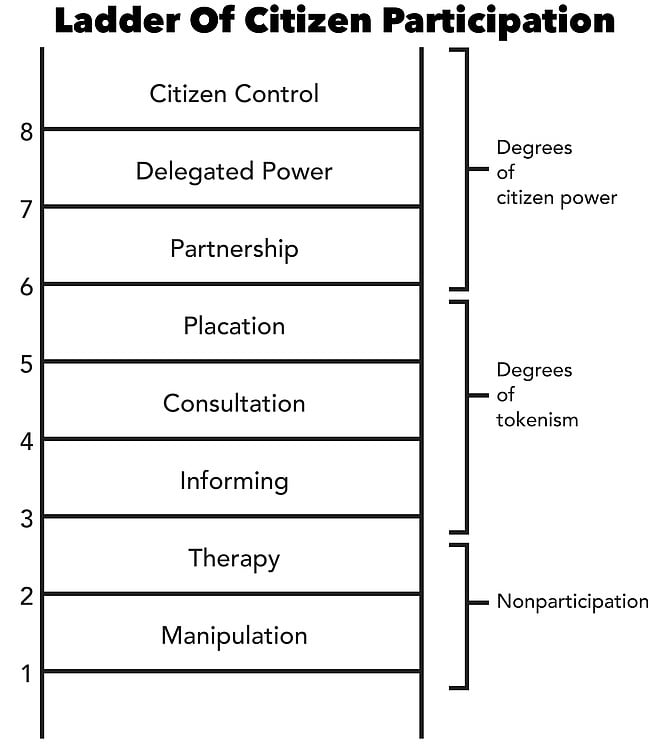
“To encourage a more enlightened dialogue, a typology of citizen participation is offered …. The typology, which is designed to be provocative, is arranged in a ladder pattern with each rung corresponding to the extent of citizens’ power in determining the plan and/or program” (original article abstract). Source: Extracted from Sherry R. Arnstein (2019) A Ladder of Citizen Participation, Journal of the American Planning Association, 85:1, 24-34.
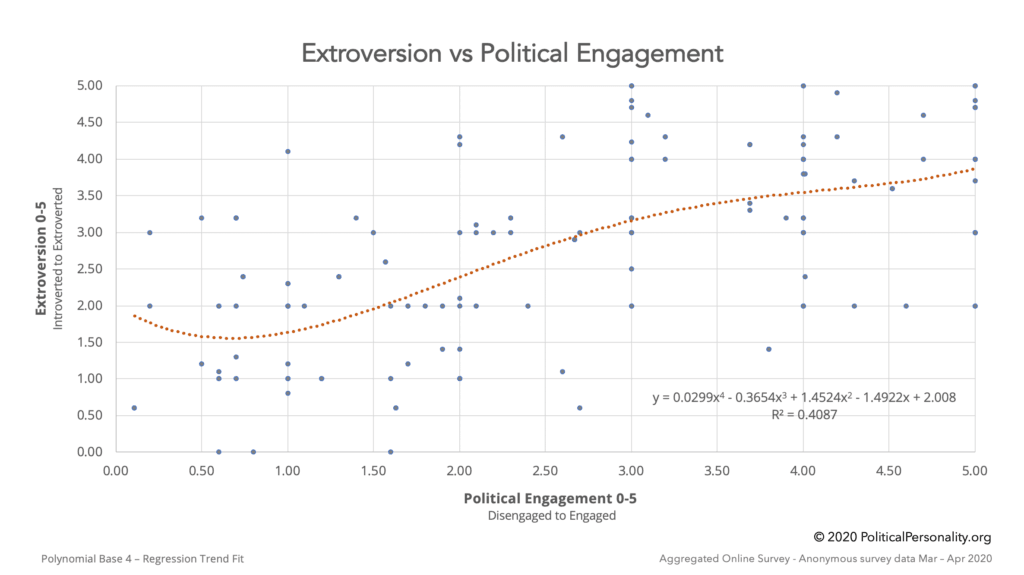
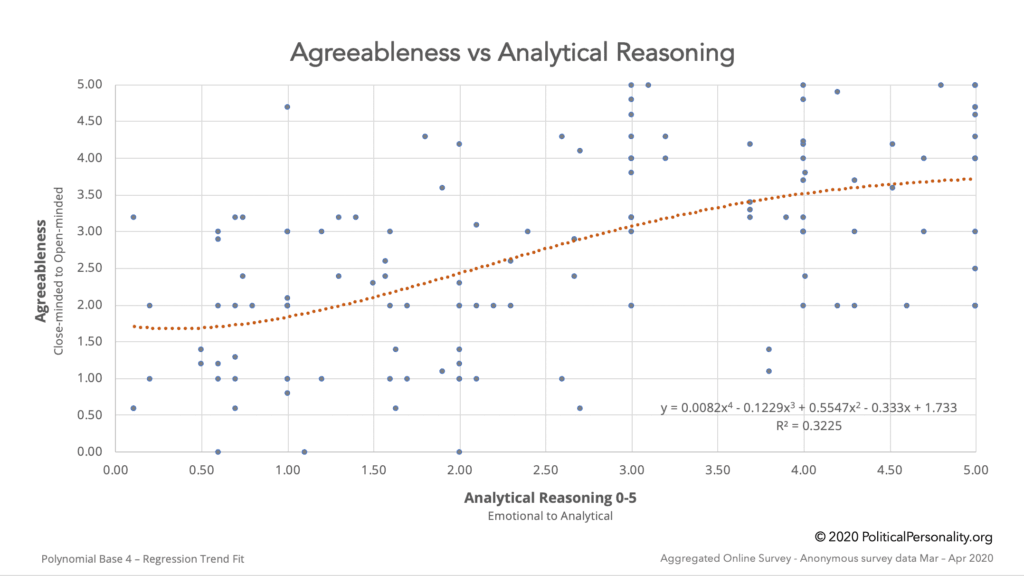
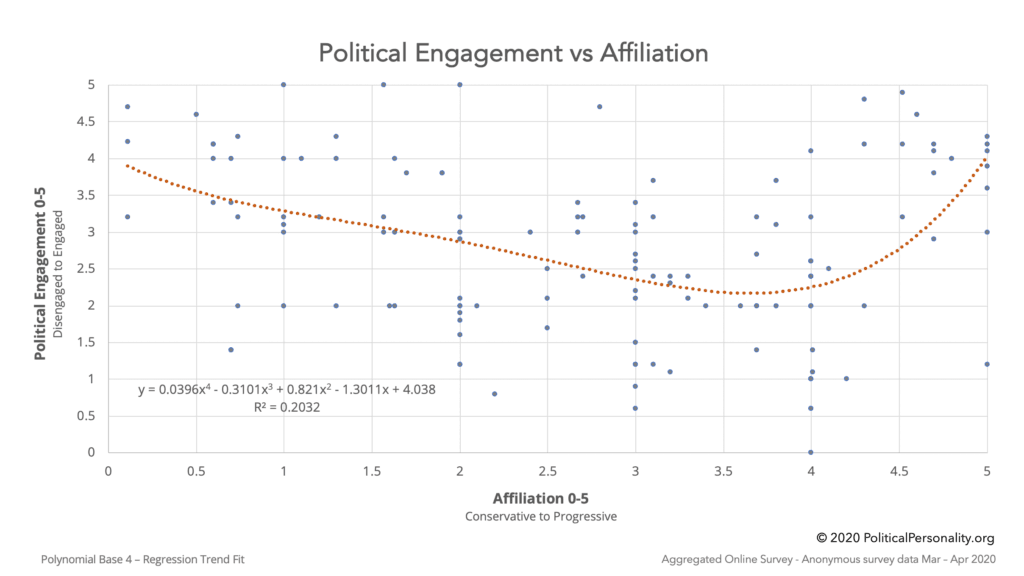
The Foundations of Personality & Politics
Personality Defined
A personality can be defined as an amalgam of multifaceted psychological systems and external behavior that contribute to a repeatable set of actions and attitudes. In other words, a personality is an internal system of predispositions that guides repeated patterns in behavior, including the relative perceptions in others’ behavior.
Politics Defined
For the purposes of this synthesis, politics can be defined simply as the interplay of people and government. From a more human perspective, it naturally includes the interactions between people and the state through debate, conflict, associations, and rule setting. These conflicts can arise domestically or internationally, while impacting the sovereignty of peoples.
Trait Psychology
To understand and standardize personality classifications, trait psychology has emerged as one of the top means to compartmentalize and characterize the relationships between traits. A trait, therefore, is a unique and enduring individual characteristic that predisposes that individual to a pattern of behavior.
Traditionally, the Big Five trait dimensions were used to classify a personality: openness to experience, conscientiousness, extraversion, agreeableness, and neuroticism.
More contemporary approaches like the Myers-Briggs Type Indicator (MBTI) personality test (C. G. Jung) which categorizes smaller, seemingly random variances in individual behavior as normalized across a spectrum. According to Myers & Briggs foundation, “Perception involves all the ways of becoming aware of things, people, happenings, or ideas. Judgment involves all the ways of coming to conclusions about what has been perceived. If people differ systematically in what they perceive and in how they reach conclusions, then it is only reasonable for them to differ correspondingly in their interests, reactions, values, motivations, and skills.”
The emergence of trait psychology-driven tests has lent credence to the approach of self-categorization through introspection. In other words, the variances in individual behavior in a given population can be grouped and profiled based on introspected answers to a series of standardized questions.
This theory has lead to the emergence of modern personality tests.
Political Psychology
Political psychology is an interdisciplinary field that focuses on applying psychological principles to political activities. In particular, political psychologists focus on understanding the consequences of political actions and behavior. For instance, political psychologists may focus on understanding how voters may react to political events based on their traits, beliefs, motivations, socializations, economic status and other socioeconomic factors.
Political psychology theory can also be applied to understand leadership roles, domestic and foreign policy making, group dynamics, conflict, voting attitudes, motivation, voting and the role of media, nationalism, and political extremism. Political psychology is often considered bi-directional because psychology helps researchers understand politics and politics helps researchers understand psychology. Other applications of political psychology include:
- Psychology strategies — How messages that convey patriotism, hope, or fear influences and motivate voters.
- Psychological traits — How a person’s individual traits affect their political views.
- Group behavior — The role and impact of psychology and politics on group behavior.
- Candidate analysis — The act of examining the traits of political candidates to understand how they influence voters and how they will behave. Psychologists also examine traits that cause voters to react positively or negatively to political candidates.
- Social and economic analysis — How a citizen’s living situation, weather, finances, or family issues affect their political behavior.
- Psychological analysis — Examining what causes an individual to run for office, decide to protest, or commit an act of violence.
Political psychology is imperative because it helps researchers understand what causes or motivates citizens to engage in politics. This helps organizations and political teams put together a platform that encourages voters to turn out and vote for issues that they want to effect.
Typically, voter alignments fall on a two dimensional spectrum or a matrix of particular voter instincts. What psychologists have studied is a correlation between these instincts and predispositions for particular behavior.
In modern campaigning, multiple studies have noted campaigns optimizing for higher media visibility by exploring the effects of their personality traits on voter relate-ability.
Normative vs. Distributive Psychological Theory
This theory denotes our interpretation of what is right or wrong. How should we act? What is the right thing to do? How can I do what is best?
On the contract, distributed questions focus on the laws of scarcity: winner takes all, who gets what, which group gets served at the expense of others?
A voter’s predisposition to ask normative vs. distributed questions (or emphasize one over the other) is correlated with values and traits that impact an aggregate outlook.
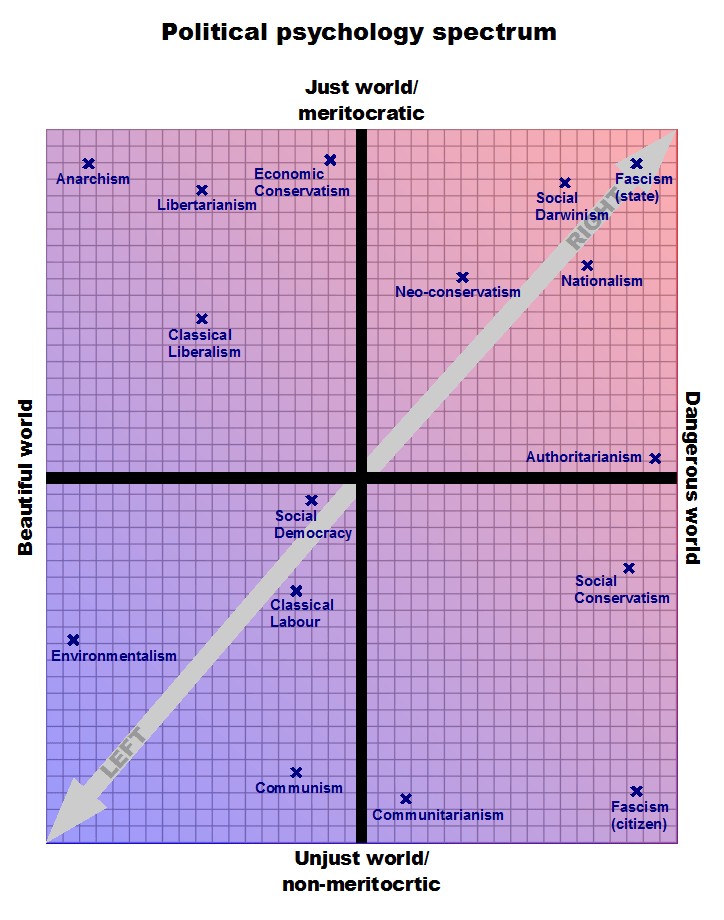
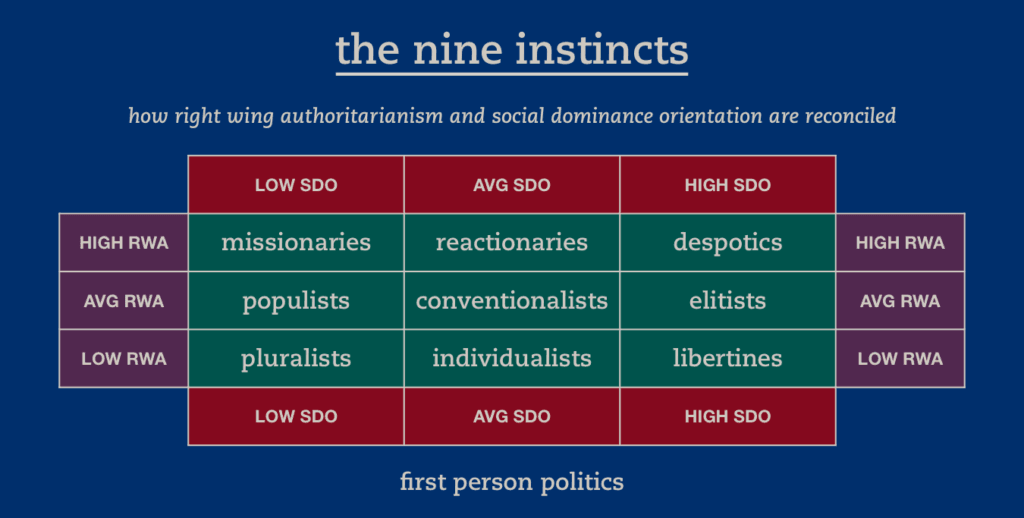
Political Participation
Every democracy has a form of political engagement among citizens and political experts continuously conceptualize and demarcate what counts as political participation. It can be difficult to recognize political participation at first sight when it comes to citizens using Internet-based technologies like blogging to express political views or other creative methods such as street organizing parties to engage in non-political and political activities.
According to Oxford Research, political participation can be loosely defined as citizens’ activities affecting politics and that there are eight rules in which to identity whether an action is a form of political participation. These rules also define different levels of political participations depending upon the activities, actors, and context involved:
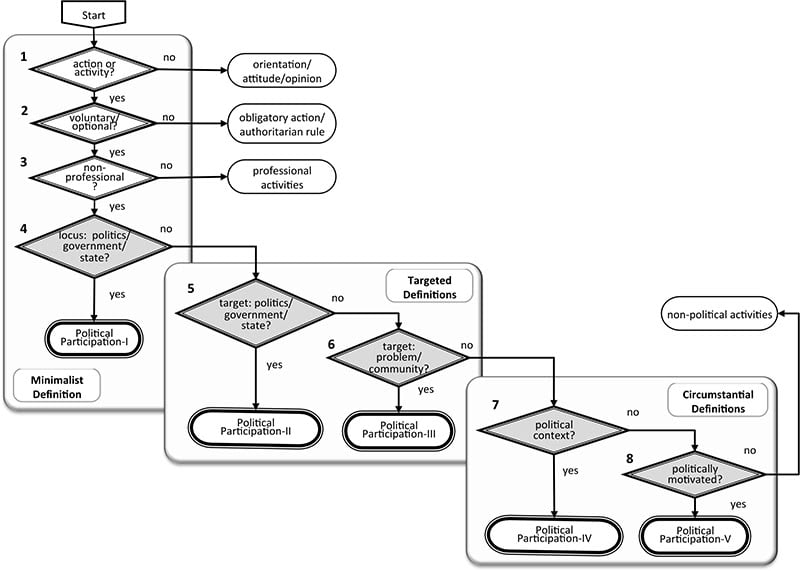
Rule 1 — Is it an activity or action?
This rule states that all participation requires an activity or action. Some researchers argue that simply being interested or paying attention to politics is not a sufficient form of political engagement. Abstention acts such as boycotting a brand or skipping an election can also be viewed as political participation activities.
Rule 2 — Is the activity voluntary?
Certain mandatory activities such as paying taxes, going to court, or sitting in traffic are examples of involuntary activities that have political consequences but are not forms of political participation. These activities have other motivations for participants that are not purely political as well. Some researchers argue that an act must be optional and based on free will to be considered political participation.
Rule 3 — Is the activity conducted by nonprofessionals?
Citizens and political officials engage in different forms of political participation and it’s important to differentiate the activities.
Rule 4 — Is the activity located in the sphere of government/state/politics?
Does the activity revolve around the institutional architecture of civil government? The first four rules make up a minimalist definition of political participation. They focus on the areas of participations, but not the outcomes. Further rules are required to cover the types of political outcomes citizens try to achieve.
Rule 5 — Is the activity targeted at the sphere of government/state/politics?
Activities not within the political arena (government / state / politics) can still be considered political participation if the activity is aimed at the political sphere.
Rule 6 — Is the activity aimed at solving collective or community problems?
Nonprofessional, voluntary activities can be considered political if they are focused on solving a collective or community related problem.
Rule 7 — Is the activity placed in a political context?
An activity that does not meet rule 4, 5, or 6 can still be recognized as political participation if it takes place in a political context (e.g. intentionally buying a certain item to protest import regulations). These types of activities express a desire to change existing political arrangements.
Rule 8 — Is the activity used to express political aims and expressions?
As long as the act fulfills the first three roles — activity, voluntariness, non-professional — but is not in the political public arena, aimed at political actors, or placed in a political context, it can still be a form of political participation if the message expresses political intentions.
Common barriers to political participation:
- Economic status – Those with less will spend more time focusing on survival acts before engaging in political participation.
- Education – The ability to gain information and knowledge can often create a barrier for people trying impact politics in a meaningful way.
- Social relationships — Isolated individuals are less likely to engage in political participation.
- Personal factors — Some individuals may have limited motivation or confidence in participation.
- Discrimination— People who are within the majority may express forms of discrimination, prejudices, and fears towards others and may not support their ability to engage.
- Disabilities — Inaccessible voting booths can make it difficult for people with disabilities to engage in politics.
- Role Models — People without role models to guide them may create a barrier to political participation.
- Legal challenges — Some countries do not allow certain people with disabilities to vote. (e.g. those with mental health problems)
The 6 Dimensions of Personality & Politics
1. Political Engagement (Introverted, extroverted)
Introversion refers to a focus on internal feelings, whereas extroversion focuses on external feelings. Political engagement refers to the willing consumption of political information or the direct participation in political activities. This includes both public and private engagement (like donating money to a campaign or actively blogging about political views).
Consumption of political information
- Introverts are more likely to consume political information that is deemed rational, logical, and independent.
- Extroverts are more likely to consume political information that is highly opinionated and passionately delivered.
Political participation
- Introverts are more likely to passively donate online or politically interface through a non-profit organization. They are less likely to actively initiate public displays of political engagement, like actively campaigning or publicly expressing their view to a contentious audience.
- Extroverts are more likely to openly express their political views publicly, but are typically more drawn to groups that echo a passion for the cause. They are more likely to form and holdfast to strong opinions and directly showcase those opinions on a public stage.
2. Idealism (Optimistic, pessimistic)
The idealism trait captures the full spectrum from politically pessimistic to optimistic.
Optimism can be defined as an innately positive, forward-looking perspective on future events and human potential. In other words, political optimism refers to an outlook that a good-natured populous, if given the tools and conditions to succeed, will in fact do so.
On the contrary, pessimism can be defined as an innately rationalist, darwinian perspective on future events and human potential. Hence, political pessimism captures an outlook that people are innately self-serving and, if given tool and conditions to succeed, will harness those for self-gain.
Political idealism
- Optimists feel that policies that serve the greater good will bring out the best in others, cultivating a society leaning towards equal protection.
- Pessimists feel that policies that serve individual interests will bring out innate survivalist tendencies in human behavior.
3. Change Appetite (Status Quo, Major Reform)
Change appetite refers to an individual’s yearning for progress and a natural progression towards a transformation.
Those who want to maintain the status quo are change averse. Political change aversion is a predisposition to maintain a sense of continued normalcy, promoting policies that further traditional norms over those that change established systems.
On the contrary, those who are change-loving have forward-looking belief systems that envision a reformed future state. These individuals prefer policies that disrupt current systems, break tradition, and further reforms that push towards a future state.
Political change appetite
- Change averse individuals prefer policies that harden or solidify traditional systems and pervasive norms.
- Reformists individuals prefer policies that disrupt traditional systems and move society towards a new normal.
4. Decision-Making (Emotional, Analytical)
Decision-making process is measured on a scale of emotional dominant to analytical dominant reasoning. It captures how an individual arrives at an idea, position, or value disposition; and, how strongly that position is validating using personable traits or disassociating traits. Personable traits captures decisions that form an individual’s identity, whereby the individual views these decisions as a necessary foundation for personal identity. On the other hand, disassociating decision traits refer to decisions whereby the viewpoint is held in confidence, but is not held as a necessary condition for personal identity.
Emotionally-dominant reasoning means that one is likely to go with a gut reaction or harness a personal feeling / state of mind to arrive at a decision that furthers an emotional predisposition.
Whereas analytically-dominant reasoning mostly relies on the synthesis of logic and facts deemed to be true by the individual.
Political decision-making
- Emotionally-dominant decisions are those that further a state-of-mind or dominant feeling. In the political arena, these tend to manifest as beliefs and biases that inform a seemingly objective decision.
- Analytically-dominant decisions are that synthesize multiple sources to validate a particular point of view, using deference to expertise or empirical knowledge as the primary decision-making variables.
5. Agreeableness (Closed-minded, open-minded)
Agreeableness measures how likely one is to be receptive to feedback and differing opinions. People who are more close-minded tend to holdfast to their beliefs, whereas those who are open-minded tend to welcome different perspectives.
Political agreeableness
- Those who are politically closed-minded tend to holdfast to singular perspectives that have been held over a longer period of time. Predispositions are seen as static and fundamental to an identity. Any challenge to that identity is perceived as a threat and is swiftly dismissed.
- On the contrary, those who are politically open-minded hold views that are susceptible to change, given that convincing facts or perspectives can sway previously held positions. Typically, opinions are not sufficient conditions for personal identity, and therefore, new information is not necessarily perceived as a threat.
6. Value Assertiveness (Passive, assertive)
Value assertiveness measures how actively one projects values and opinions onto others. Those who are passive tend to keep to themselves, whereas those who are very assertive tend to openly advocate for their beliefs.
Political value assertiveness
- Those who are value assertive tend to publicly project their opinions, regardless of reception. They tend to be drawn to others who are also assertive, especially those who assert similar values.
- Those who are politically passive can still hold strong opinions, but typically keep those opinions internally. They are attracted to leaders who demonstrate composed thought and maintain a steady demeanor.
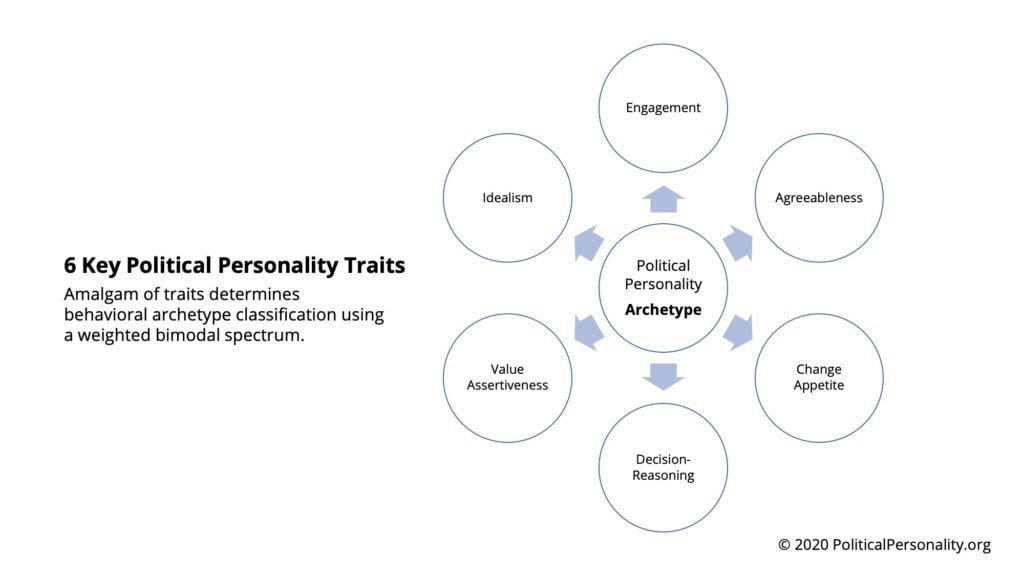
Traits and Partisan Behaviors
In a Penn State University study by Harald Schoen and Siegfried Schumann, participants were surveyed to see if their personality traits and inclinations had any significant predictive influence on voting behaviors — using the big 5 model of openness, conscientiousness, extraversion, agreeableness, and neuroticism.
The study found that there is a predictive correlation between personality traits and voting behavior, even when controlling for socio-economic and demographic factors in the study. Furthermore, these correlations were indirect insofar as certain amalgams of traits would predispose particular cohorts to vote or engage in politics in different ways.
When constructing the survey, the researchers used a mix of political value preferences, engagement models, and big 5 traits questions to see if attitudes towards particular issues correlated with personality cohorts. The structure of these questions were used to influence the My Political Personality test.
In the MPP test, respondents are first presented with a series of questions assessing direct and indirect political and social engagement – and also predispositions towards accepting new or contrarian information. The test then leads into questions that assess major social and economic policy positions held by the major U.S. political parties.
The deltas between archetype trait scores and the scores from these questions feed into a matching algorithm that most closely matches one of 8 archetypes.
Works Cited
- Alford, J. R., Funk, C. L., & Hibbing, J. R. (2005). Are political orientations genetically transmitted? American Political Science Review, 99, 153–167.
- Barrick, M. R., & Mount, M. K. (1991). The Big Five personality dimensions and job performance: A meta-analysis. Personnel Psychology, 44, 1–26.
- Cawvey, Matthew, et al. “Personality and Political Behavior.” Oxford Research Encyclopedia of Politics, 25 Jan. 2017, oxfordre.com/politics/view/10.1093/acrefore/9780190228637.001.0001/acrefore-9780190228637-e-221.
- Deth, Jan W. van. “What Is Political Participation?” Oxford Research Encyclopedia of Politics, November 22, 2016. https://oxfordre.com/politics/view/10.1093/acrefore/9780190228637.001.0001/acrefore-9780190228637-e-68.
- ‘FPP. “The Nine Instincts: Overview.” First Person Politics, April 7, 2016. https://www.firstpersonpolitics.com/the-nine-instincts-overview/#.XsFVeBNKjAI.
- Gerber, A. S., Huber, G. A., Doherty, D., & Dowling, C. M. (2011). Personality traits and the consumption of political information. American Politics Research, 39, 32–84.
- Khasnabis, Chapal. “Political Participation.” Community-Based Rehabilitation: CBR Guidelines. U.S. National Library of Medicine, January 1, 1970. https://www.ncbi.nlm.nih.gov/books/NBK310967/.
- McCrae, R. R., & Costa, P. T. (1997). Personality trait structure as a human universal. American Psychologist, 52, 509–516.
- Sibley, C. G., Osborne, D., & Duckitt, J. (2012). Personality and political orientation: Meta-analysis and test of a threat–constraint model. Journal of Research in Personality, 46, 664–677.


